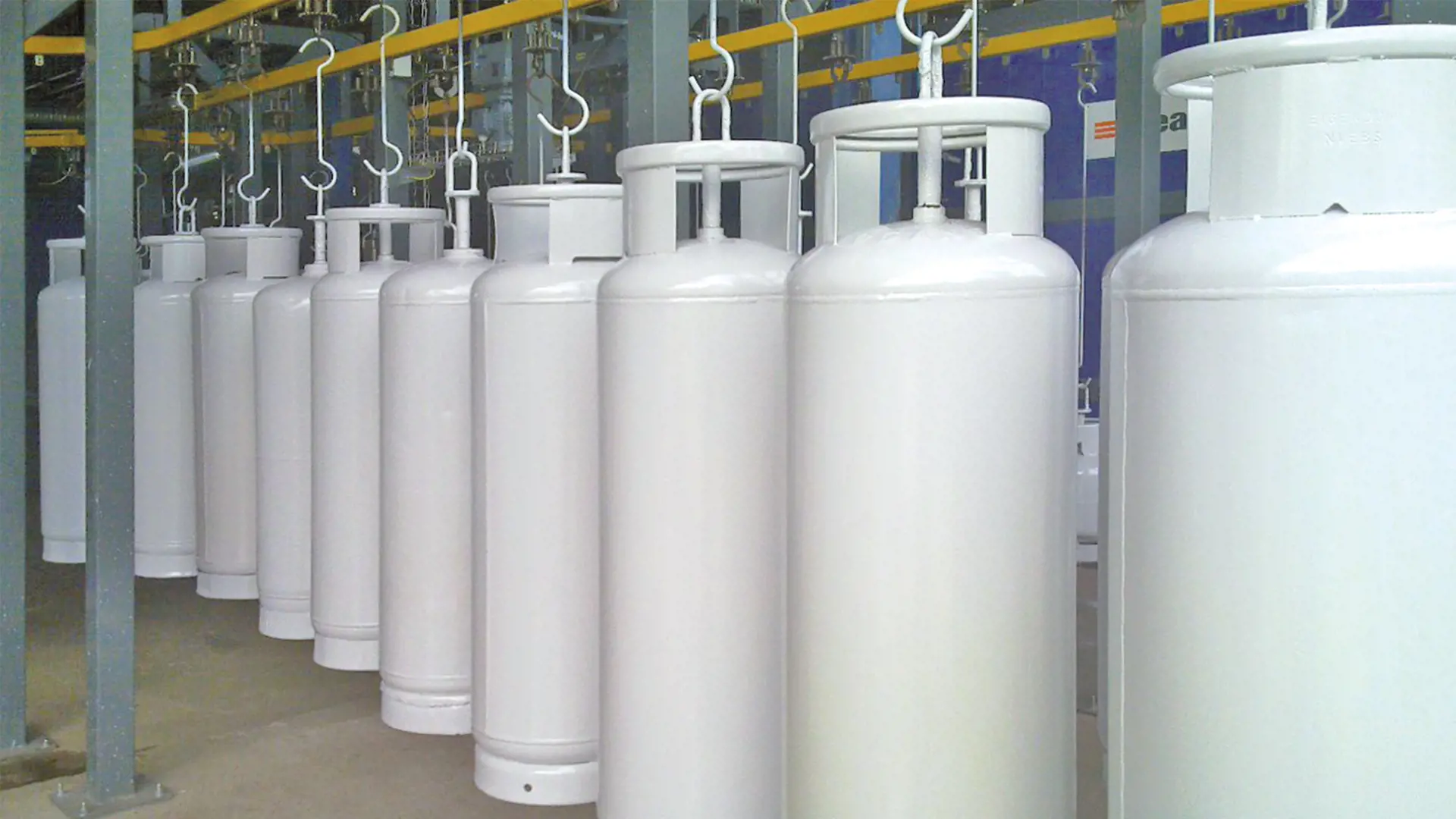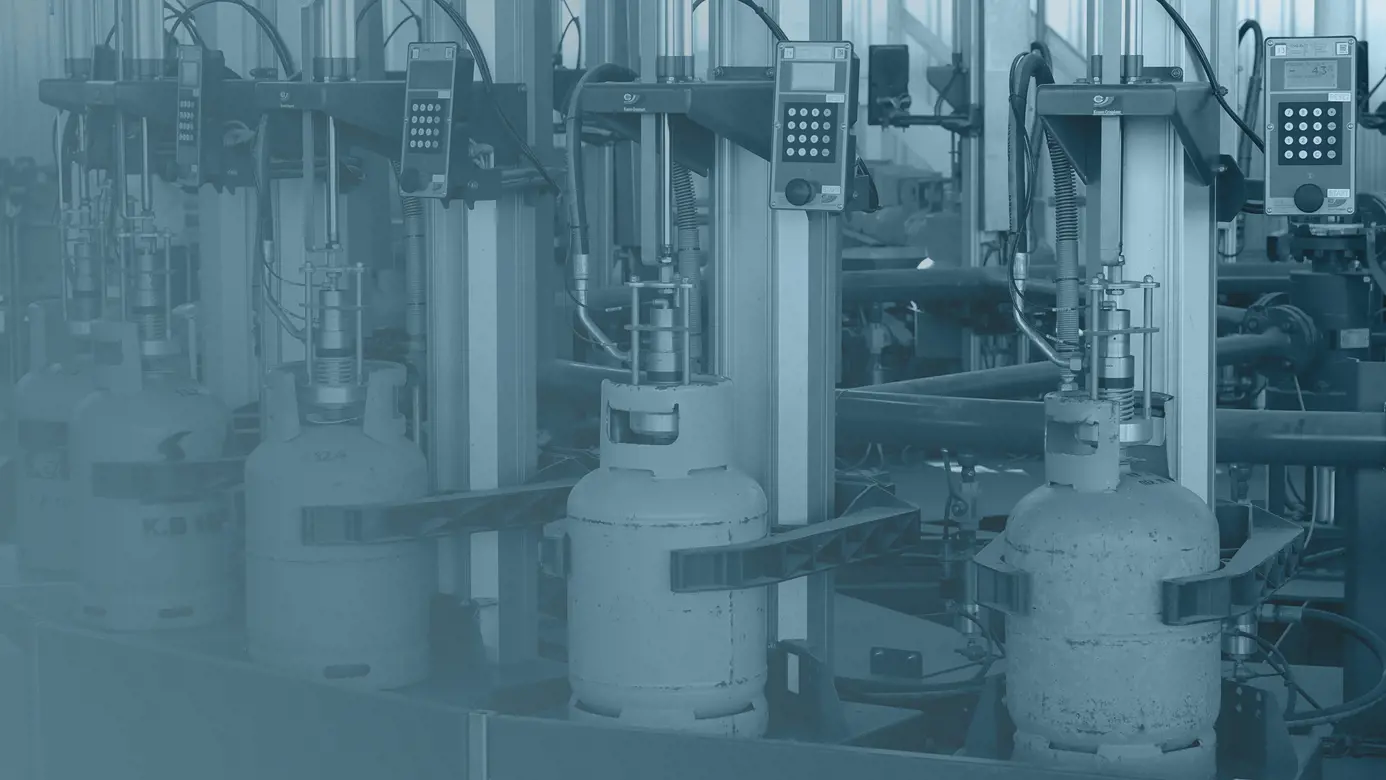CASE: N.V. Energiebedrijven Suriname, Surinam (2013)
Customer
N.V. Energiebedrijven, Suriname
The customer's challenge
Constant problems with rusting cylinders due to harsh climate conditions.
Our solution
A new innovative painting procedure that combines wet paint and powder paint. The joint effect of the 'plastic coating' and the rust-preventing primer effectively seals the surface of the cylinders.
The outcome
The LPG cylinders are effectively protected against rust and will not need to be repainted for years.

With the LPG cylinders constantly exposed to the harsh climate of Suriname, N.V. Energiebedrijven Suriname had serious rust problems that required a creative solution from Kosan Crisplant (today known as MAKEEN Energy). The heat is overwhelming in Suriname, and the air is very humid. With two rainy seasons a year, there is literally water everywhere – on the ground, in the air and from above. As most domestic LPG cylinders are placed on the ground outside the houses, they are continuously exposed to the abrasion of the relentless climate. Humidity is very corrosive, and it is quite a task to protect the cylinders against rust.
The maintenance procedure performed at N.V. Energiebedrijven Suriname's plant in Paramaribo included stripping off the paint (shot-blasting process) and pressure testing the cylinders, after which they were painted again. But unfortunately the rust kept creeping in underneath the paint. The procedure was changed, a different paint was tried, but none of the solutions were good enough.
Wet paint or powder?
The wet paint previously used contained zinc as the anti-corrosion agent, which worked fine. However, this paint was rather thick and had been applied by hand, the coating coming out looking lumpy and uneven. On top of this, the process required an excessive amount of paint which was quite expensive.
An alternative to the wet paint would be powder paint, which always does a nice job, as it comes out good-looking and even. But as it is, powder paint contains less anti-corrosion agents than wet paint.
Innovative and tailor-made solution
Kosan Crisplant's cross-Atlantic project team came up with a truly creative solution to this challenge: to take the best from two worlds by mixing the two. However, the very idea was unnatural as it required the mixing of two very different processes in one and the same operation, but with a little unorthodox thinking, it was made happen after all.
The new painting procedure first takes the cylinders through a wet paint system. Then they are allowed to vaporize a little before continuing through the powder paint system and from there to a heat zone of 190°C, which makes the powdered layer melt and become all plastic-like. The joint effect of the 'plastic coating' and the rust-preventing primer seals the surface of the cylinders and protects them effectively.
It has been a great process with a truly fantastic result. This is a completely new way of doing things that has never been tried before, so we couldn’t really be sure that it would work. But it did, and I never really doubted it. Kosan Crisplant are very committed to their customers, and they don’t budge until they’ve found a solution. As they work all over the world, they see a lot of things and deal with many different kinds of problems. And they’re very good at using all their knowledge and experience to find new ways. It has definitely worked for us, and I’m extremely pleased with what they’ve come up with.




